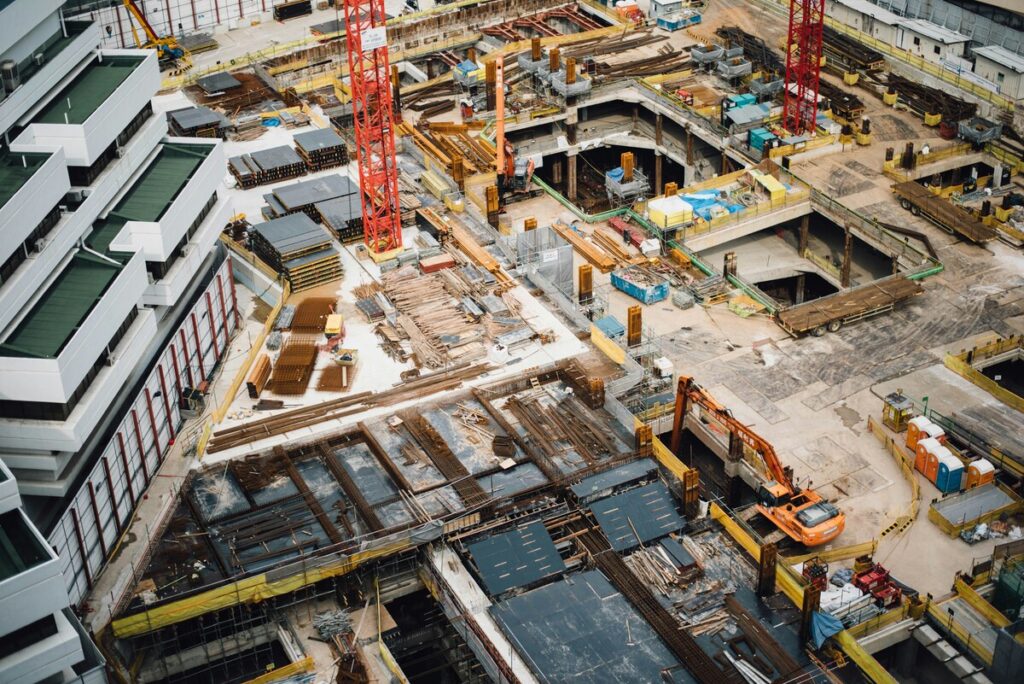Construction sites are dynamic environments where workers face a myriad of hazards daily, making safety a top priority. According to recent statistics from the Occupational Safety and Health Administration (OSHA), the construction industry accounted for a significant portion of workplace fatalities, with 20.7% of all private industry fatalities occurring in construction in 2020. Additionally, the Bureau of Labor Statistics (BLS) reported that in 2019, there were 1,061 construction fatalities, highlighting the pressing need for enhanced safety measures in the industry.
Amidst the complexities and risks inherent in construction work, understanding the types, causes, and prevention strategies of construction accidents is paramount for safeguarding the well-being of workers and promoting a culture of construction site safety. This comprehensive guide aims to delve into the intricacies of construction accidents, exploring common types such as falls, struck-by incidents, and electrocutions, while also addressing the underlying causes and contributing factors.
Furthermore, we will examine the legal framework and responsibilities governing construction safety, emphasizing the importance of regulatory compliance and employer obligations. Additionally, this guide will explore preventive measures, emergency response protocols, support and rehabilitation strategies for injured workers, and the integration of Internet of Things (IoT) technology to enhance safety on construction sites.
By equipping stakeholders with knowledge, resources, and practical insights, we strive to empower the construction industry to mitigate risks, prevent construction accidents, and foster a culture of safety that prioritizes the well-being of all individuals involved in construction projects.
Table of Contents
Understanding Construction Accidents
Construction sites are inherently hazardous environments where a multitude of factors can converge to create potentially life-threatening situations. Understanding construction accidents is paramount for anyone involved in the industry, from workers and supervisors to project managers and regulators. By comprehending the common types, causes, and contributing factors of these construction accidents, stakeholders can implement proactive measures to mitigate risks and enhance safety protocols.
Suggested article to read: Construction Safety Sensors; Guide to 2024
Types of Construction Accidents
- Falls: Falls are among the most prevalent and deadly types of construction accidents. They can occur from elevated work surfaces, scaffolding, ladders, or roofs. Failure to utilize fall protection equipment or improper installation of guardrails significantly increases the risk of falls.
- Struck-by Accidents: Workers on construction sites are frequently exposed to moving vehicles, falling objects, and swinging equipment. Struck-by accidents occur when workers are hit by heavy machinery, construction materials, or vehicles. These construction accidents often result from inadequate signaling, poor visibility, or failure to establish clear safety zones.
- Electrocutions: Construction sites typically involve the extensive use of electrical equipment and wiring. Electrocutions occur when workers come into contact with live wires, faulty equipment, or improperly grounded electrical systems. Failure to adhere to electrical safety standards and procedures can lead to severe injuries or fatalities.
- Caught-in or Between Accidents: These construction accidents involve workers getting trapped, crushed, or pulled into machinery, equipment, or collapsing structures. Common scenarios include being caught in moving machinery, trench collapses, or being pinned between materials. Inadequate machine guarding, lack of proper training, and failure to follow lockout/tagout procedures contribute to these construction accidents.
- Collapse of Structures: Construction involves the assembly of various structures, including buildings, bridges, and tunnels. Structural collapses can occur due to design flaws, substandard materials, poor workmanship, or unforeseen environmental factors. Such incidents pose significant risks to workers and bystanders, often resulting in catastrophic injuries or fatalities.
Suggested article to read: Top 11 Construction Safety Tips for 2024
Causes and Contributing Factors
- Human Error: Many construction accidents stem from human factors such as fatigue, distraction, complacency, or lack of proper training. Failure to follow established safety protocols, shortcuts, or disregard for safety regulations can exacerbate the risk of construction accidents.
- Inadequate Safety Measures: Insufficient safety precautions, including lack of proper personal protective equipment (PPE), inadequate fall protection systems, or absence of safety signage, increase the likelihood of accidents on construction sites.
- Poor Communication and Coordination: Ineffective communication among workers, supervisors, and subcontractors can lead to misunderstandings, delays, and ultimately, construction accidents. Clear communication channels, regular safety meetings, and comprehensive job briefings are essential for maintaining a safe work environment.
- Equipment Malfunctions: Mechanical failures, equipment defects, or improper maintenance of machinery and tools can result in construction accidents. Regular inspections, preventive maintenance programs, and prompt repairs are crucial for ensuring equipment reliability and safety.
- Environmental Factors: Adverse weather conditions, unstable soil, and other environmental hazards can increase the risk of construction accidents. Proper assessment of site conditions, implementation of appropriate safety measures, and adherence to weather-related protocols are essential for minimizing these risks.
Understanding construction accidents involves recognizing the diverse array of hazards present on construction sites, identifying their root causes, and implementing proactive measures to prevent them. By prioritizing safety, adhering to established regulations, and fostering a culture of vigilance and accountability, stakeholders can work together to mitigate risks and ensure the well-being of everyone involved in construction projects.
Suggested article to read: The Role of Climbing and Inspection Robots in Construction Safety; 2024 Guide
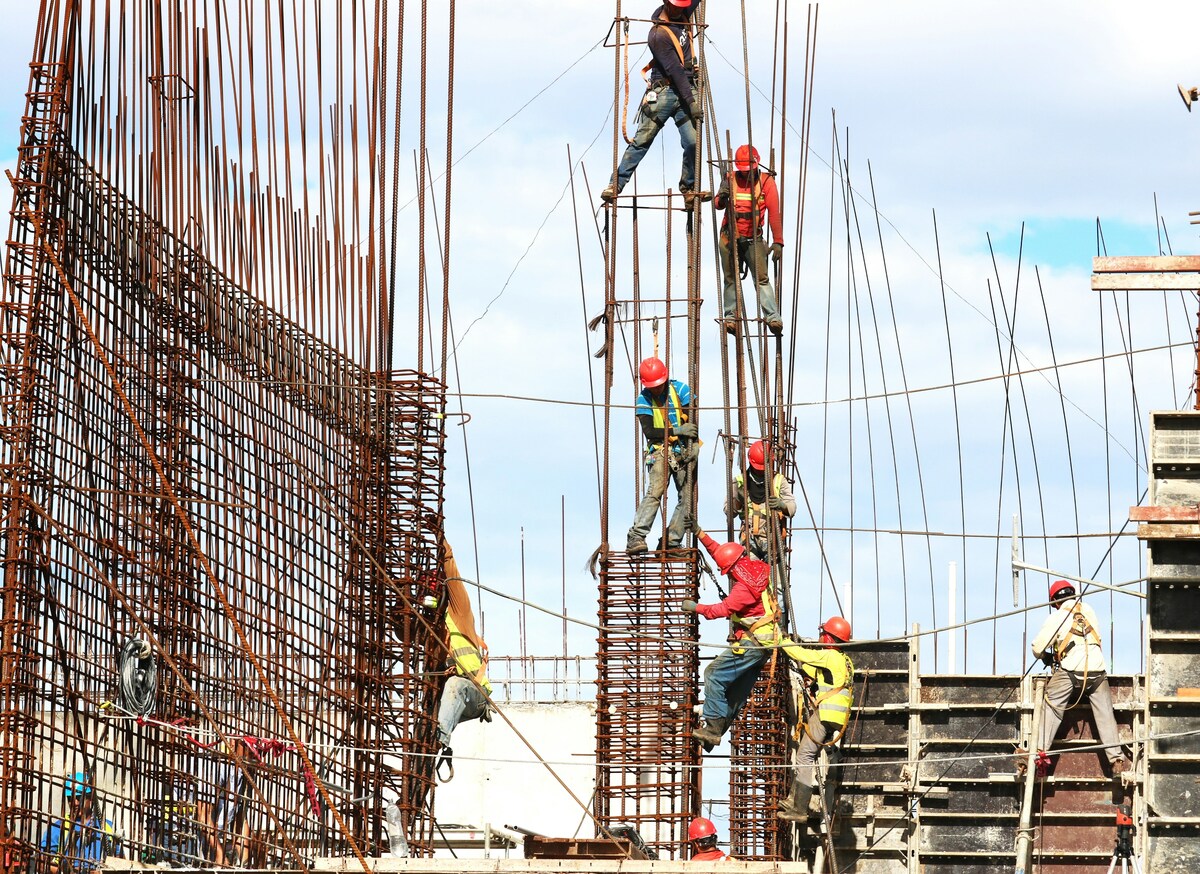
Legal Framework and Responsibilities
The construction industry operates within a robust legal framework designed to safeguard the health and safety of workers, contractors, and the public. Understanding the legal obligations and responsibilities is essential for all parties involved in construction projects to ensure compliance and minimize the risk of construction accidents and injuries.
1. Occupational Health and Safety Laws
- Occupational health and safety (OSH) laws are enacted at both the federal and state levels to regulate workplace safety standards, including those in the construction industry.
- In the United States, the Occupational Safety and Health Administration (OSHA) sets and enforces safety regulations applicable to construction sites through standards such as the OSHA Construction Safety and Health Standards (29 CFR 1926).
- OSH laws typically outline requirements for hazard communication, fall protection, personal protective equipment (PPE), scaffolding, electrical safety, and more.
2. Employer Responsibilities
- Employers have a legal obligation to provide a safe work environment for their employees, including those in the construction industry.
- Responsibilities may include conducting regular safety inspections, providing adequate training on safety procedures and equipment usage, ensuring proper maintenance of tools and equipment, and implementing safety protocols to mitigate hazards.
- Employers are also required to provide appropriate personal protective equipment (PPE) and ensure its proper use and maintenance.
3. Contractor and Subcontractor Duties
- Contractors and subcontractors working on construction projects have a duty to comply with safety regulations and ensure the safety of their employees and others affected by their work.
- This includes conducting safety briefings, coordinating safety measures with other contractors on-site, and adhering to safety protocols established by the project owner or general contractor.
4. Worker Rights and Responsibilities
- Workers have the right to a safe work environment and the responsibility to follow safety procedures and use PPE as required.
- Workers are encouraged to report unsafe conditions or practices to their employers or relevant authorities without fear of retaliation.
5. Liability and Legal Consequences
- Failure to comply with OSH regulations can result in legal consequences, including fines, penalties, and potential civil or criminal liability.
- In the event of a construction accident resulting in injury or death, liable parties may face legal action, including lawsuits for negligence or violations of safety regulations.
- Employers, contractors, subcontractors, and even property owners may be held accountable for construction accidents that occur on construction sites under their control.
6. Regulatory Compliance and Documentation
- Compliance with OSH regulations requires thorough documentation of safety protocols, training records, safety inspections, incident reports, and corrective actions taken.
- Maintaining accurate records is crucial for demonstrating compliance with safety regulations and defending against potential legal claims in the event of accidents.
Understanding the legal framework and responsibilities in construction safety is essential for all stakeholders involved in construction projects. By adhering to safety regulations, fulfilling their obligations, and fostering a culture of safety, employers, contractors, and workers can work together to create safer construction sites and prevent accidents and injuries.
Suggested article to read: Top 10 Wearable Sensors for Workers in Construction
Prevention Strategies
Preventing construction accidents requires a proactive approach that addresses potential hazards, implements safety measures, and promotes a culture of safety among all stakeholders involved in construction projects. Here are some effective prevention strategies:
1. Comprehensive Safety Training
- Provide thorough safety training to all workers, including new hires and subcontractors, covering topics such as hazard recognition, proper equipment usage, emergency procedures, and the importance of PPE.
- Offer specialized training for high-risk activities such as working at heights, operating heavy machinery, and handling hazardous materials.
2. Hazard Identification and Risk Assessment
- Conduct regular hazard assessments of construction sites to identify potential risks and implement controls to mitigate them.
- Involve workers in hazard identification and encourage them to report unsafe conditions or practices promptly.
3. Implementing Safety Protocols and Procedures
- Establish and enforce clear safety protocols and procedures for all tasks performed on construction sites, including proper use of equipment, erection and dismantling of scaffolding, and handling of hazardous materials.
- Develop site-specific safety plans that address unique hazards and conditions present on each construction site.
4. Providing and Enforcing Personal Protective Equipment (PPE)
- Ensure that workers have access to appropriate PPE, including hard hats, safety glasses, gloves, hearing protection, and fall protection equipment.
- Mandate the use of PPE in accordance with OSHA regulations and company policies, and regularly inspect and maintain PPE to ensure effectiveness.
5. Fall Prevention Measures
- Implement fall prevention measures such as guardrails, safety nets, and personal fall arrest systems to protect workers from falls from heights.
- Ensure that all elevated work surfaces, including scaffolding and ladders, are properly secured and equipped with appropriate fall protection systems.
6. Equipment Maintenance and Inspection
- Establish regular inspection and maintenance schedules for construction equipment and machinery to ensure safe operation.
- Train workers to recognize signs of equipment malfunction or deterioration and report issues promptly for repair or replacement.
7. Communication and Coordination
- Foster open communication channels among workers, supervisors, contractors, and subcontractors to facilitate the exchange of safety information and coordination of activities.
- Conduct pre-task safety briefings and regular safety meetings to discuss potential hazards, address concerns, and reinforce safety protocols.
8. Emergency Preparedness
- Develop and communicate emergency response plans for various scenarios, including fires, medical emergencies, and natural disasters.
- Ensure that all workers are trained in emergency procedures and know how to respond effectively to mitigate risks and protect themselves and others.
9. Continuous Improvement and Learning
- Conduct regular reviews and evaluations of safety performance to identify areas for improvement and implement corrective actions.
- Encourage feedback from workers and stakeholders to identify emerging hazards or trends and adjust safety protocols accordingly.
10. Promoting a Culture of Safety
- Cultivate a culture of safety where all workers feel empowered to prioritize safety and actively participate in safety initiatives.
- Recognize and reward safe behavior and contributions to a safe work environment to reinforce the importance of safety as a core value.
By implementing these prevention strategies and fostering a culture of safety, construction companies can reduce the risk of construction accidents, protect the well-being of workers, and enhance overall project safety performance.
Suggested article to read: What is IoT in Predictive Maintenance? 2024 Review
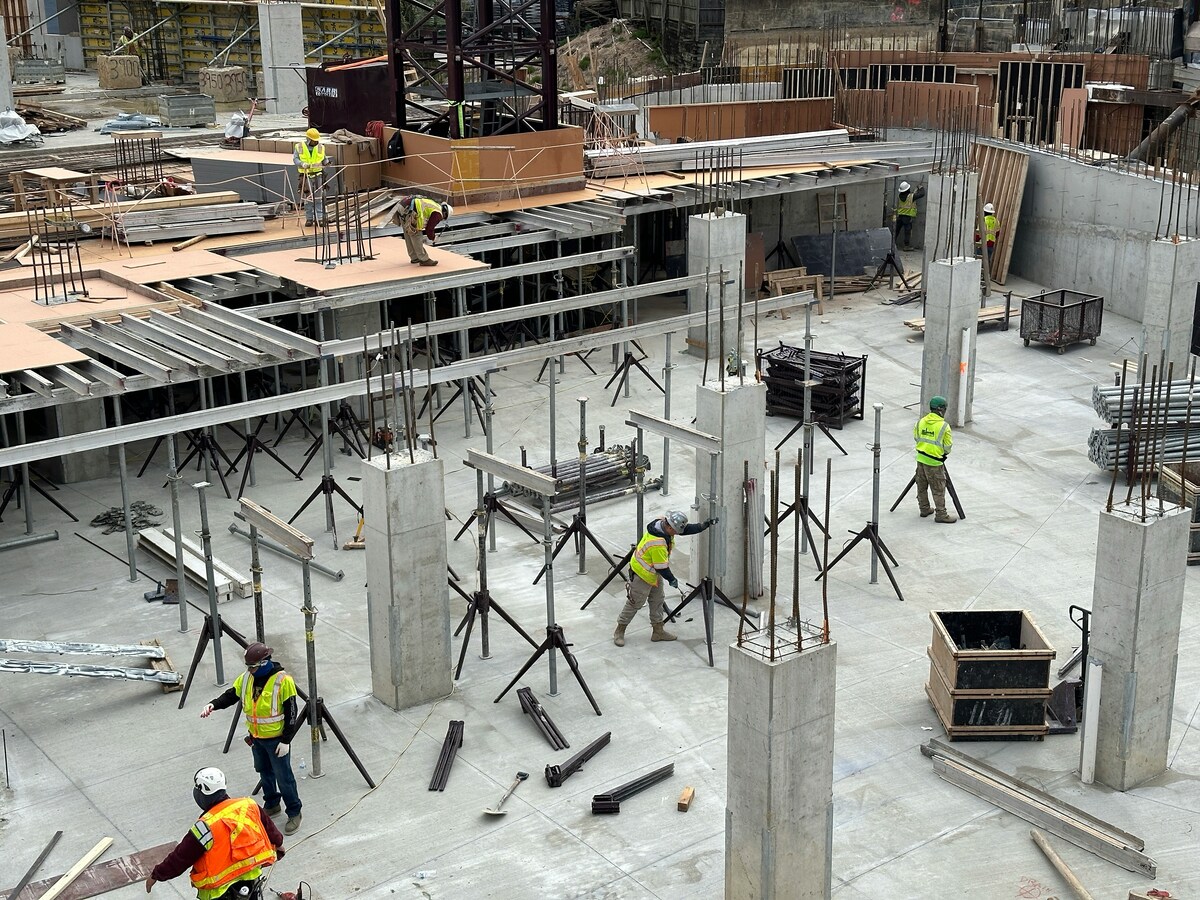
Emergency Response and Reporting
Effective emergency response and reporting procedures are critical components of construction site safety management. Construction sites are inherently dynamic environments where construction accidents or emergencies can occur unexpectedly. Having well-defined protocols in place ensures that workers can respond promptly and effectively to mitigate risks and minimize the impact of emergencies. Here are key elements of emergency response and reporting in construction:
1. Emergency Response Plan (ERP)
- Develop a comprehensive emergency response plan that outlines procedures for various types of emergencies, including fires, medical emergencies, hazardous material spills, and natural disasters.
- Assign specific roles and responsibilities to designated personnel, including emergency coordinators, first aid responders, and evacuation leaders.
- Conduct regular drills and exercises to familiarize workers with emergency procedures and test the effectiveness of the ERP.
2. Communication Systems
- Establish clear communication systems to relay emergency notifications and instructions to all workers on the construction site.
- Ensure that communication devices, such as two-way radios, are readily available and functioning properly.
- Designate assembly areas or rendezvous points where workers can gather after evacuating the construction site.
3. Evacuation Procedures
- Develop evacuation routes and assembly points that are clearly marked and easily accessible from all areas of the construction site.
- Train workers on evacuation procedures, including how to exit the site safely and where to gather for accountability.
- Designate personnel to assist workers with disabilities or mobility issues during evacuations.
4. First Aid and Medical Response
- Maintain well-equipped first aid stations or medical kits at strategic locations throughout the construction site.
- Ensure that workers are trained in basic first aid procedures and CPR, and designate individuals to provide immediate medical assistance in case of injuries or medical emergencies.
- Establish protocols for contacting emergency medical services and coordinating their response to the construction site.
5. Hazardous Material Spills
- Develop procedures for responding to hazardous material spills, including containment, cleanup, and notification of appropriate authorities.
- Provide training and personal protective equipment (PPE) for workers involved in handling hazardous materials or responding to spills.
- Clearly mark hazardous material storage areas and ensure that workers are aware of the risks associated with handling these materials.
6. Reporting Procedures
- Establish clear protocols for reporting emergencies, accidents, near misses, and hazardous conditions on the construction site.
- Encourage workers to report incidents promptly to their supervisors or designated safety personnel, using standardized reporting forms or procedures.
- Ensure that all incident reports are documented, investigated, and addressed to prevent recurrence and improve safety performance.
7. Post-Emergency Procedures
- Conduct post-emergency debriefings to review the response to the emergency, identify lessons learned, and make recommendations for improvements to the ERP.
- Provide support and counseling services for workers affected by the emergency, including those who may have witnessed traumatic events or experienced injuries.
8. Regulatory Compliance
- Ensure that emergency response and reporting procedures comply with relevant regulatory requirements, including OSHA standards and local building codes.
- Regularly review and update emergency plans and procedures to reflect changes in site conditions, personnel, or regulations.
By implementing robust emergency response and reporting procedures, construction companies can effectively manage emergencies, protect the safety and well-being of workers, and minimize the impact of incidents on construction projects. Regular training, communication, and evaluation are essential for maintaining readiness and ensuring a swift and coordinated response to emergencies on construction sites.
Support and Rehabilitation
In the construction industry, where construction accidents and injuries are unfortunately common occurrences, providing support and rehabilitation for injured workers is paramount. These individuals often face physical, emotional, and financial challenges as they navigate the recovery process. Employers, insurers, and relevant agencies must collaborate to ensure that injured workers receive the necessary support and resources to facilitate their rehabilitation and eventual return to work. Here are key aspects of support and rehabilitation for injured workers in the construction industry:
1. Immediate Medical Care
- Following an injury on the construction site, it’s crucial to provide immediate medical attention to the injured worker.
- Ensure that first aid is administered promptly and that emergency medical services are called if necessary.
- Transport the injured worker to the nearest medical facility for further evaluation and treatment.
2. Access to Healthcare Services
- Facilitate access to comprehensive healthcare services, including specialized treatment, rehabilitation therapy, and follow-up care.
- Coordinate with healthcare providers to develop individualized treatment plans tailored to the specific needs and circumstances of the injured worker.
3. Rehabilitation Programs
- Offer rehabilitation programs aimed at restoring the physical, emotional, and functional abilities of injured workers.
- Provide access to physical therapy, occupational therapy, and other rehabilitation services to help injured workers regain strength, mobility, and independence.
- Collaborate with vocational rehabilitation counselors to explore potential career options and retraining opportunities for workers unable to return to their previous roles due to injury.
4. Financial Assistance
- Ensure that injured workers receive timely and adequate compensation for medical expenses, lost wages, and other related costs.
- Facilitate access to workers’ compensation benefits, including temporary disability benefits, permanent disability benefits, and vocational rehabilitation services.
- Provide guidance and support to injured workers in navigating the workers’ compensation claims process and resolving any disputes or challenges that may arise.
5. Emotional Support
- Recognize the psychological impact of workplace injuries and provide emotional support to injured workers and their families.
- Offer counseling services, support groups, or employee assistance programs to help workers cope with the emotional stress and trauma associated with their injuries.
- Foster a supportive work environment where injured workers feel valued, respected, and included, even during their recovery period.
6. Accommodations and Modifications
- Make reasonable accommodations and modifications to the work environment to accommodate the needs of injured workers returning to work.
- Modify job duties, schedules, or workstations to accommodate physical limitations or restrictions resulting from the injury.
- Provide assistive devices or adaptive equipment to help injured workers perform their job tasks safely and effectively.
7. Return-to-Work Programs
- Implement structured return-to-work programs that facilitate the gradual transition of injured workers back to the workplace.
- Collaborate with healthcare providers, rehabilitation specialists, and supervisors to develop customized return-to-work plans based on the worker’s capabilities and medical status.
- Monitor the progress of injured workers throughout the return-to-work process and make adjustments as needed to ensure a successful and sustainable reintegration into the workforce.
8. Preventive Measures
- Identify and address underlying factors contributing to workplace injuries to prevent future incidents.
- Conduct thorough incident investigations to determine root causes and implement corrective actions to mitigate risks and hazards.
- Provide ongoing safety training and education to workers to raise awareness of potential hazards and promote a culture of safety throughout the organization.
By prioritizing support and rehabilitation for injured workers, construction companies can demonstrate their commitment to the well-being of their employees and foster a positive and inclusive workplace culture. Investing in the recovery and rehabilitation of injured workers not only benefits the individuals directly affected but also contributes to the overall health, safety, and productivity of the workforce.
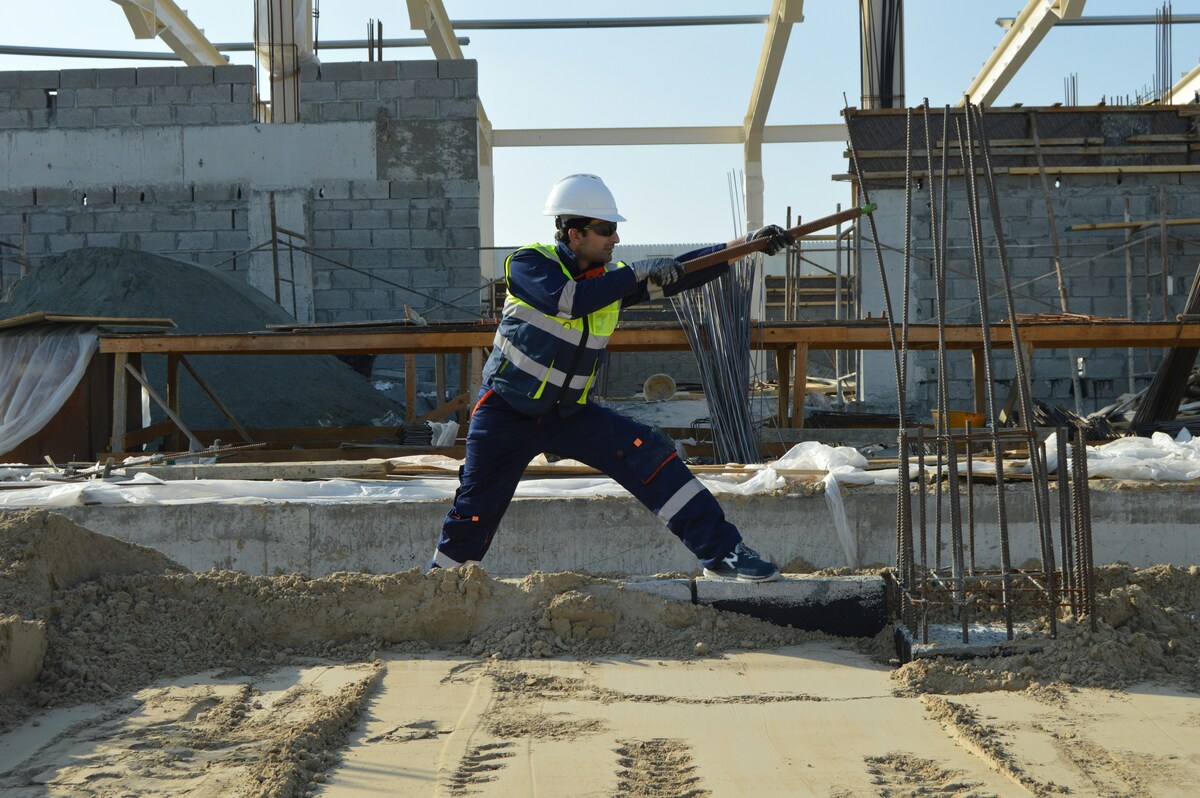
IoT and Safety in Construction
The construction industry has seen a significant transformation in recent years with the integration of Internet of Things (IoT) technology, revolutionizing how safety is managed and monitored on construction sites. IoT offers innovative solutions to improve safety by providing real-time data, predictive analytics, and remote monitoring capabilities. Here’s how IoT is enhancing safety in construction:
1. Wearable Technology
- Wearable devices, such as smart helmets, safety vests, and biometric sensors, equipped with IoT capabilities, enable continuous monitoring of workers’ vital signs, location, and movement.
- These devices can detect and alert workers and supervisors of potential safety hazards, such as high temperatures, hazardous gases, or unsafe behaviors, allowing for immediate intervention to prevent construction accidents.
Suggested article to read: Top 12 Wearable Technology in Construction Industry
2. Real-Time Location Tracking
- IoT-enabled tracking systems utilize sensors and GPS technology to monitor the location of workers, equipment, and materials in real-time on construction sites.
- This allows supervisors to quickly locate workers in case of emergencies, ensure adherence to safety zones and restricted areas, and optimize resource allocation for improved safety and efficiency.
3. Environmental Monitoring
- IoT sensors installed throughout construction sites can continuously monitor environmental conditions, such as air quality, noise levels, temperature, and humidity.
- Real-time data on environmental factors enables proactive measures to mitigate health risks, prevent heat-related illnesses, and ensure compliance with safety regulations.
4. Equipment Safety and Maintenance
- IoT-enabled sensors embedded in construction equipment and machinery can monitor equipment performance, detect malfunctions or breakdowns, and predict maintenance needs before they lead to construction accidents or delays.
- Predictive maintenance based on IoT data helps prevent equipment failures, minimize downtime, and prolong the lifespan of machinery, enhancing safety and productivity on construction sites.
5. Automated Safety Inspections
- IoT devices, such as drones and unmanned aerial vehicles (UAVs), equipped with cameras and sensors, can perform automated safety inspections of construction sites.
- These inspections can identify potential safety hazards, structural defects, or compliance issues, allowing for timely corrective actions to be taken to mitigate risks and ensure regulatory compliance.
6. Remote Monitoring and Control
- IoT platforms enable remote monitoring and control of construction sites, allowing supervisors and project managers to oversee operations from anywhere, at any time.
- Remote access to real-time data and video feeds enables proactive decision-making, rapid response to emergencies, and coordination of resources, enhancing overall safety and efficiency.
7. Data Analytics and Predictive Insights
- IoT-generated data collected from various sensors and devices can be analyzed using advanced analytics and machine learning algorithms to identify patterns, trends, and potential safety risks.
- Predictive analytics can forecast potential safety incidents, optimize resource allocation, and prescribe preventive measures to reduce the likelihood of construction accidents and injuries on construction sites.
8. Enhanced Communication and Collaboration
- IoT platforms facilitate seamless communication and collaboration among workers, supervisors, subcontractors, and stakeholders involved in construction projects.
- Instantaneous communication through IoT-enabled devices improves coordination, facilitates emergency response, and fosters a culture of safety by enabling timely dissemination of safety alerts, updates, and best practices.
By leveraging IoT technology, the construction industry can proactively address safety challenges, improve risk management, and create safer working environments for workers while enhancing overall project efficiency and productivity. As IoT continues to evolve, its integration into construction safety practices will undoubtedly play a pivotal role in shaping the future of the industry.
Suggested article to read: 25 Best IoT Conferences and Events to Attend in 2024
Safety Guidelines for Construction Sites
Safety guidelines are essential for ensuring the well-being of workers and minimizing the risk of construction accidents. These guidelines outline best practices, procedures, and protocols that must be followed to maintain a safe working environment. Here are key safety guidelines for construction sites:
1. Personal Protective Equipment (PPE)
- Wear appropriate PPE at all times, including hard hats, safety glasses, high-visibility clothing, gloves, and steel-toed boots.
- Use respiratory protection when working in dusty or hazardous environments, and hearing protection in noisy areas.
2. Fall Protection
- Use fall protection systems, such as guardrails, safety nets, or personal fall arrest systems (PFAS), when working at heights six feet or higher.
- Ensure that ladders and scaffolding are properly secured and inspected before use.
3. Hazard Communication
- Label hazardous materials properly and provide Safety Data Sheets (SDS) detailing their handling, storage, and disposal requirements.
- Communicate potential hazards and safety precautions to workers through signage, training, and toolbox talks.
4. Equipment Safety
- Inspect and maintain construction equipment regularly to ensure proper functioning and safety.
- Follow the manufacturer’s instructions for equipment operation and use guards and safety devices as required.
5. Electrical Safety
- Identify and label electrical hazards, such as overhead power lines and exposed wiring.
- Use ground fault circuit interrupters (GFCIs) for electrical outlets and avoid overloading circuits.
6. Excavation and Trench Safety
- Implement protective measures, such as trench boxes or shoring, to prevent cave-ins during excavation work.
- Conduct atmospheric testing for hazardous gases and ensure proper ventilation in confined spaces.
7. Material Handling
- Use proper lifting techniques and mechanical aids, such as hoists or forklifts, to avoid musculoskeletal injuries.
- Securely stack materials to prevent collapse or falling objects, and clear debris from walkways and work areas.
8. Fire Safety
- Maintain clear access to fire extinguishers, fire alarms, and emergency exits at all times.
- Establish a fire prevention plan and conduct regular fire drills to ensure prompt evacuation in case of fire.
9. Emergency Preparedness
- Develop an emergency response plan (ERP) outlining procedures for responding to emergencies, such as fires, medical emergencies, or natural disasters.
- Provide training to workers on emergency procedures and conduct regular drills to test their effectiveness.
10. Housekeeping and Site Management
- Keep construction sites clean and organized to reduce trip hazards and minimize the risk of construction accidents.
- Implement procedures for waste disposal, recycling, and hazardous material storage in accordance with regulations.
11. Training and Supervision
- Ensure that workers receive comprehensive safety training relevant to their job duties and tasks.
- Provide ongoing supervision and feedback to ensure compliance with safety guidelines and address unsafe behaviors promptly.
12. Construction Reporting and Investigation
- Encourage workers to report construction accidents, near misses, and hazards promptly to supervisors or safety personnel.
- Investigate incidents thoroughly to identify root causes and implement corrective actions to prevent recurrence.
By following these safety guidelines and fostering a culture of safety, construction companies can create a safer working environment for their employees and reduce the risk of construction accidents. Regular training, communication, and enforcement of safety protocols are essential for maintaining a strong safety culture and preventing incidents.
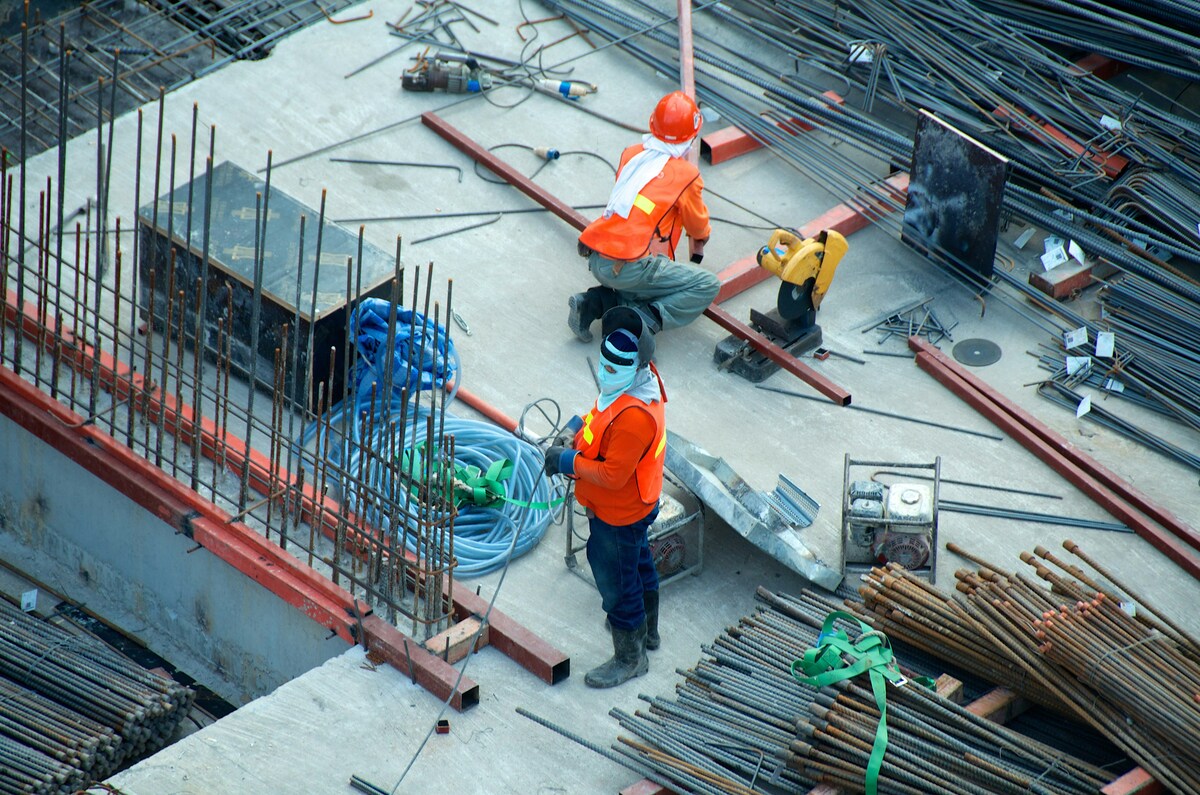
Conclusion
In conclusion, understanding construction accidents and implementing effective safety measures are crucial for protecting the well-being of workers and ensuring a safe working environment on construction sites. By recognizing the common types and causes of construction accidents, stakeholders can proactively address potential hazards and mitigate risks through comprehensive safety guidelines, proactive prevention strategies, and the integration of innovative technologies such as IoT.
Through the implementation of robust safety protocols, including the use of personal protective equipment, fall protection systems, and hazard communication procedures, construction companies can minimize the risk of accidents and injuries. Additionally, fostering a culture of safety, providing ongoing training and supervision, and promoting open communication among workers are essential for maintaining vigilance and compliance with safety regulations.
Furthermore, in the unfortunate event of accidents or injuries, providing timely medical care, rehabilitation support, and financial assistance to injured workers is critical for facilitating their recovery and eventual return to work. By prioritizing the well-being of their employees and investing in support and rehabilitation programs, construction companies can demonstrate their commitment to safety and contribute to a positive and inclusive workplace culture.
Ultimately, by adhering to safety guidelines, leveraging innovative technologies, and fostering a culture of safety, construction companies can create safer working environments, minimize the risk of accidents, and ensure the health and safety of everyone involved in construction projects. Through continuous improvement and collaboration, the construction industry can strive towards achieving its goal of zero accidents and injuries, making construction sites safer for workers and the community alike.
Suggested article for reading:
5 Types of Wireless Alarm Button in Construction Site; 2024 Review
7 Types of Alarm Button in Construction Site; 2024 Review
5 Types of Evacuation Alarm in Construction Site (2024)
Resources:
Procore | National Accident Helpline | The New York Times | World Construction Today | Greenberg and Ruby
For all the pictures: Unsplash

